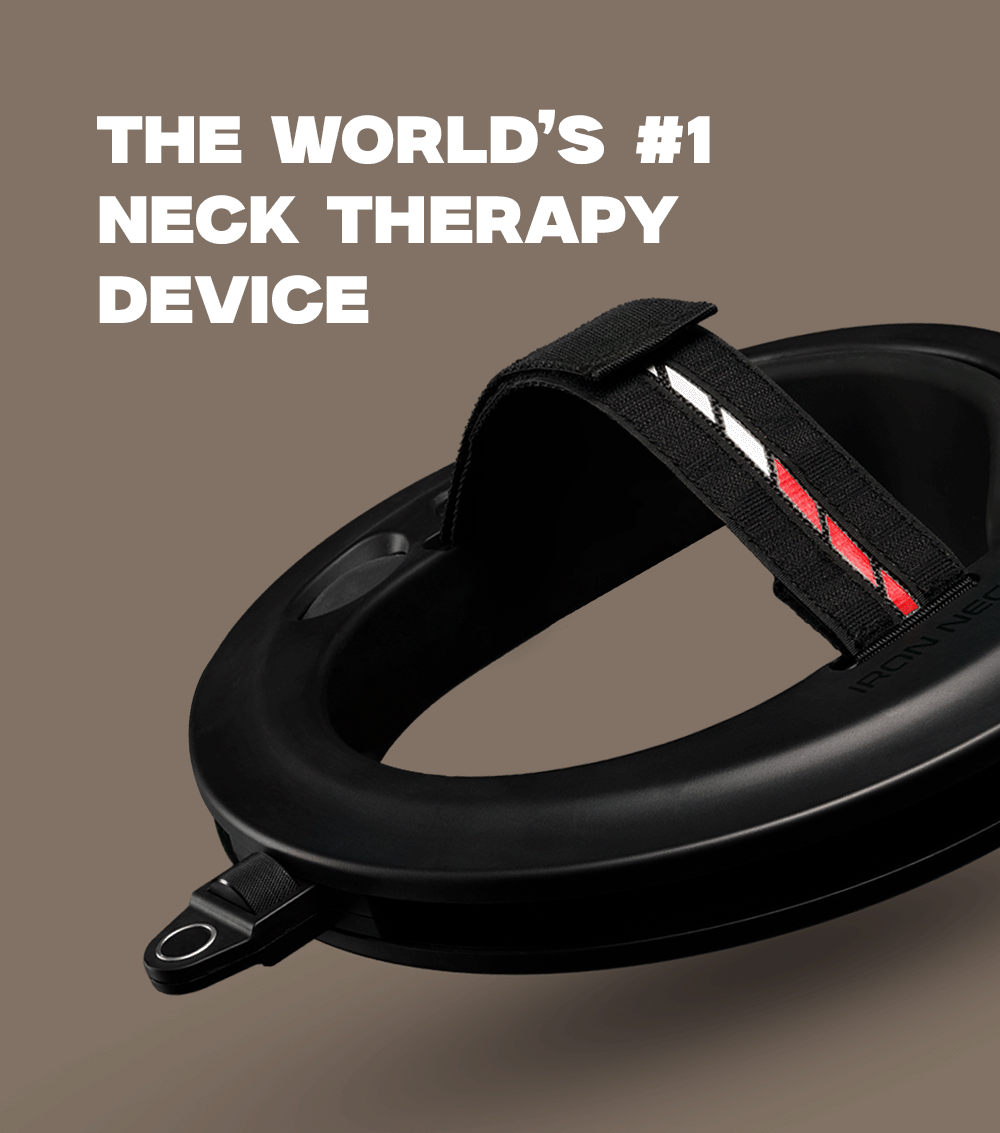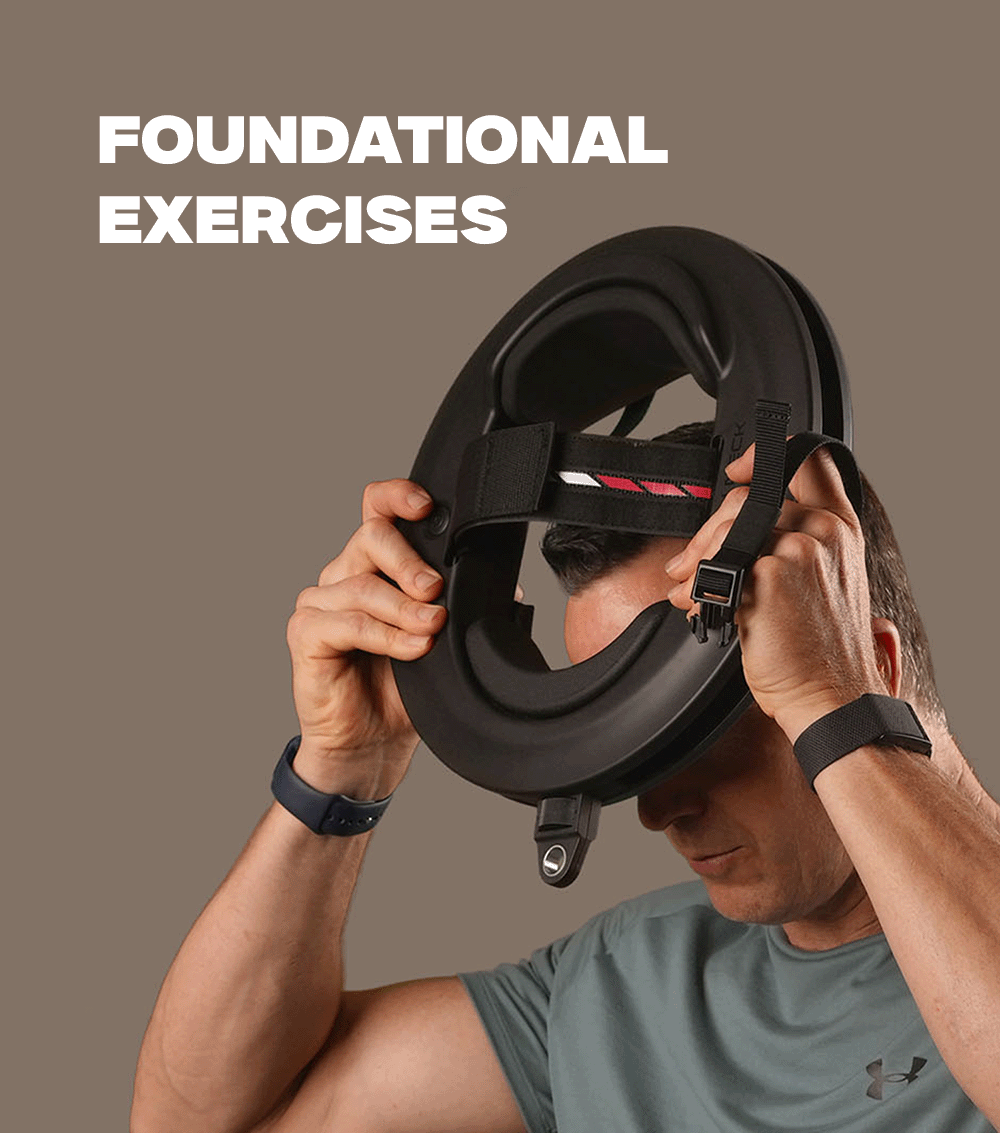The neck bridge exercise has long been a staple in traditional strength training programs, especially for wrestlers, martial artists, and football players. For athletes in high-impact sports, a strong neck is more than just muscle. It serves as protection against concussions, whiplash, and career-threatening injuries. The bridge was considered a simple way to toughen the neck, improve mobility, and build resilience against force and impact.
But despite its reputation, the neck bridge remains one of the most controversial movements in fitness. Supporters highlight its ability to deliver serious strength gains, while critics point to the strain it places on the cervical spine. When performed without the right technique, progression, or supervision, the exercise can quickly shift from effective to dangerous.
The neck bridge places high compressive and shear loads on the cervical spine in extended positions. It should not be attempted without sport-specific coaching and progressive preparation [4]. Most people will achieve better risk-benefit profiles using safer alternatives listed below. The advice given in this article is in line with the guidance from The Orthopaedic Section of the American Physical Therapy Association (APTA) [1].
Benefits of the Neck Bridge Exercise
The neck bridge gained popularity because it delivers results in specific performance settings. For athletes who need strong, resilient necks, the exercise can offer several advantages when performed correctly:
1. Builds Neck Strength and Muscle Endurance
The bridge activates the deep neck flexors, extensors, and stabilizers, helping athletes develop the strength needed to withstand impact and resist fatigue.
2. Improves Resilience in Contact Sports
In sports like wrestling, MMA, football, and rugby, a stronger neck may help reduce head acceleration during impacts; however, there is no proven exercise or device that prevents concussion [2, 3]. Emphasise technique, safe contact practices, and coach-led programmes.
3. Enhances Spinal Mobility
Cervical mobility should be trained in controlled, mid-range movements; avoid end-range, weight-bearing extension when unsupervised, which is especially important for athletes who often find themselves in compromised positions [1].
While the benefits of the neck bridge exercise are real, they come with an equally important caution: without the right preparation and technique, the risks can outweigh the rewards.
Safer Alternatives to Neck Bridges
You don’t need to put your spine at risk to build a stronger neck. Today, athletes and coaches have access to safer, more controlled methods that target the same muscles without the dangers of excessive compression. These alternatives allow for progressive overload, better form, and long-term joint health.
Isometric Neck Holds
One of the safest ways to start neck training is through isometric holds. These exercises build stability without forcing movement through the cervical spine.
How to do it:
-
Sit or stand with good posture.
-
Place your palm against your forehead.
-
Gently press your head into your hand without allowing movement.
-
Hold for 5 to 10 seconds, then release.
-
Repeat in all directions: front, back, and each side.
- Dosage: 5 to 10-second holds; 6 to 8 repetitions per direction; once or twice daily. Keep the neck in neutral; do not allow motion during the press
Resistance Band Neck Training

Bands allow you to train flexion, extension, rotation, and lateral movements with controlled resistance. Unlike the bridge, this method distributes tension evenly.
How to do it:
-
Attach a resistance band to a stable anchor.
-
Loop the band around the back of your head or secure it with a strap.
-
Step forward to create light tension.
-
Slowly move your head forward (flexion), backward (extension), or side to side, resisting the band with control.
-
Perform 8 to 12 reps per direction.
-
Move only through a comfortable mid-range; stop if you notice dizziness, visual change, limb numbness or weakness [1, 5].
Controlled Mobility Drills
Mobility drills reinforce safe movement patterns and keep the cervical spine flexible. They are ideal as warm-ups or recovery work.
How to do it:
-
Start seated or standing tall.
-
Slowly tilt your head forward and backward.
- Rotate left to right within a comfortable mid-range; avoid end-range or ballistic movements.
-
Rotate left to right, keeping movements smooth and controlled.
-
Gently tilt your ear toward your shoulder on each side.
-
Move through each range for 5 to 10 reps without forcing the motion.
Modern Training Tools
Specialized equipment offers a safer, more progressive way to build neck strength. Iron Neck tools train all planes of motion while reducing the compressive forces associated with the bridge.
How to use it:
-
Adjust the tool to the correct height so resistance aligns with your head.
-
Select a light resistance setting to start.
-
Perform controlled flexion, extension, lateral flexion, and rotation exercises.
- Keep reps slow and focus on posture to avoid strain.
Why the Neck Bridge Can Be Dangerous (If Not Done or Treated Properly)
The neck bridge isn’t always bad, but it’s one of the riskiest moves you can put your neck through. The main issue is not the exercise itself but the way it is often performed without proper technique, gradual progression, or consideration of individual limitations.
1. High Compressive Load on the Cervical Spine
This move puts your body weight directly on the neck in an extended position. This compressive force can stress the discs, vertebrae, and ligaments in ways most necks aren’t conditioned to handle. Without coaching, do not perform weight-bearing end-range cervical extension or rotation.
2. Increased Risk of Injury With Poor Form
Arching too aggressively, pushing through fatigue, or lacking control can lead to strains, pinched nerves, or even more serious injuries. For many, this shows up later as recurring stiffness the kind often reported by people who wake up with sudden neck pain.
3. Long-Term Wear and Tear
Even if you avoid immediate injury, repetitive use of the bridge can create cumulative strain. Over time, this can contribute to stiffness, reduced mobility, and chronic neck discomfort.
4. Not for Everyone
Athletes with a history of neck or spinal injuries, or those training without professional supervision, should avoid the movement altogether. In most cases, there are safer ways to build strength without exposing the spine to unnecessary risk.
The neck bridge exercise becomes dangerous when not treated properly. Avoid entirely if you have recent neck trauma, prior cervical surgery, known cervical artery disease, connective-tissue laxity, suspected instability, or progressive neurological symptoms; seek clinical advice before any neck loading [5, 6, 7].
Why the Iron Neck Is the Smarter Alternative to the Neck Bridge
One of the most effective of these modern tools is the Iron Neck. It was designed specifically to reduce compressive loading compared with bridging; all training carries some risk. Use light resistance, maintain mid-range positions, and stop with any neurological or vascular warning signs. No device has been proven to prevent concussion; equipment should be used alongside coach-led technique and general safety practices [1].
With Iron Neck you can train flexion, extension, rotation, and lateral movements under controlled resistance. Rather than forcing the spine into extreme positions, the resistance is distributed evenly across all angles. This allows you to build the same strength, mobility, and resilience that athletes once tried to achieve with bridges, only without the added risk.
That’s why more athletes and coaches are making the switch to safer training that delivers better long-term performance.
Success Stories from Iron Neck Product
★★★★★ “Excellent Product” – Dennis F.
“ I have been using Iron Neck for about two weeks, and have found that it stimulates muscles that aren’t sufficiently worked by bridges and neck straps. Iron Neck Pro let’s you adjust the tension on rotary movements that you use in every day activities. I’m looking forward to evaluating this product again in another two or three months, but for now, I’m very enthusiastic about its effectiveness.
Moving Beyond the Risks of the Neck Bridge
The neck bridge exercise has earned its place in strength training history, but it comes with risks that make it unsuitable for many athletes today. While it can build toughness and strength, the potential for spinal stress and long-term wear is hard to ignore.
Fortunately, there are better options. Simple methods like isometric holds, band training, and mobility drills provide safe entry points, while modern tools such as the Iron Neck take neck training further by combining safety with versatility.
Your neck is one of the most important and also one of the most vulnerable parts of the body. It deserves the same care and strategy you give to the rest of your training. Safer and smarter methods will always deliver better long-term results than outdated high-risk exercises.
FAQs
1. What is the neck bridge exercise?
The neck bridge is a traditional strength training move where you support your body weight on your head and neck in a bridge position. It was often used by wrestlers, martial artists, and football players to build neck strength and mobility.
2. Why is the neck bridge considered risky?
The exercise places high compressive force on the cervical spine. Without perfect form, gradual progression, and supervision, it can cause strains, pinched nerves, and long-term wear on the discs and ligaments. Risk increases with end-range extension or rotation, fatigue, or inadequate preparation
3. Who should avoid doing neck bridges?
Anyone with a history of neck, spine, or head injuries should avoid the movement. Beginners without a strong foundation or proper coaching are also at higher risk of injury.
4. Are there safer alternatives to the neck bridge?
Yes. Safer options include isometric neck holds, resistance band neck training, controlled mobility drills, and modern training tools like the Iron Neck. These methods target the same muscles without compressing the spine. Use neutral or mid-range positions, slow tempo, and light resistance at first; progress under a qualified coach.
5. What makes the Iron Neck safer than neck bridges?
It allows neck training in neutral and mid-range positions and reduces compressive loading compared with bridging; it does not remove all risk or prevent concussion.
References:
- Blanpied PR, Gross AR, Elliott JM, et al. Neck pain: clinical practice guidelines—revision 2017. J Orthop Sports Phys Ther. 2017;47(7):A1–A83.
- CDC. HEADS UP helmet safety pages. “There is no concussion-proof helmet.” 2018–2025.
- Garrett JM, Kerr ZY, Parr MS, et al. The relationship between neck strength and sports-related concussion in team sports: systematic review with meta-analysis. J Orthop Sports Phys Ther. 2023.
- Mills BM, Anderson S, Courson R, et al. Consensus recommendations on the prehospital care of the injured athlete with a suspected catastrophic cervical spine injury. Clin J Sport Med. 2020;30(6):471–482.
- Jadhav AP, Yaghi S, Engelter S, et al. Treatment and outcomes of cervical artery dissection in adults: AHA/ASA scientific statement. Stroke. 2024;55:e91–e106.
- Childress MA, Stuek SJ. Neck pain: initial evaluation and management. Am Fam Physician. 2020;102(3):150–156.
- North American Spine Society. Diagnosis and treatment of cervical radiculopathy from degenerative disorders. NASS Guideline; access 2021.
Disclaimer: The Iron Neck blog provides educational content on neck training, fitness, and recovery. It’s not a substitute for medical advice, please consult a healthcare professional before starting any new exercise or recovery program.










Leave a comment
This site is protected by hCaptcha and the hCaptcha Privacy Policy and Terms of Service apply.